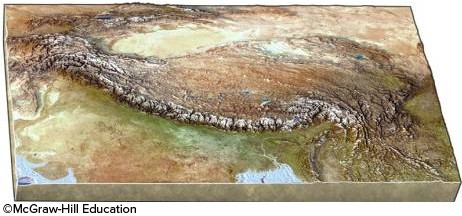The angular distance of the Sun or the Moon above or below the Earth's equatorial plane is called the ________
A) apogee
B) declination
C) ecliptic
D) perihelion
E) syzygy
B
You might also like to view...
Which statement best illustrates the "tragedy of the commons?"
A. A factory pollutes a river as much as the law allows. B. Some levels of pollution are life threatening. C. Some activities harm the environment, but others do not. D. Irrigated cropland can be ruined by salinization. E. Cropland can decrease biodiversity.
Doubling time is
A. the time it takes for a woman to bear two children B. the number of years it will take for a population to double in size C. the time before the birth rate will fall D. the number of years a person is expected to live
Why does the Tibetan Plateau, shown in this figure, have a high elevation?
A. continental rifting B. seafloor spreading C. hot-spot activity D. transform faulting E. continental collision
Why do U.S. economists commonly refer to externalities as an example of market failure?
A. firms that are required to pay social costs of externalities produce more B. externalities present a case where markets consider all social costs C. externalities present a case where markets only consider some social costs D. firms avoid having to pay social costs of externalities by lowering prices